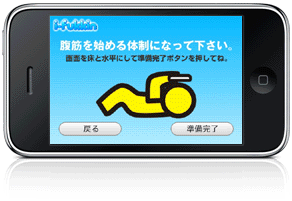Found on Japan Newbie:
Here is a great Japanese iPhone app that encourages you to do sit-ups. i-Fukkin!
They should have done some research before settling on their application name though.
FUKKIN is 腹筋 (ふっきん) in Japanese, which means “abdominal muscles,” and isn’t funny at all. You can use 腹筋 as a verb too and say, 「腹筋をする」to mean “to do sit-ups.”
The app is pretty fun.
It counts your sit ups for you.
It gives you encouragement as you proceed.
When you stop, it says 「こらー!休むなぁ!!!」(koraa! yasumuna!) which means, “Hey!!! don’t rest!”
You also get to watch a nice cheer-girl urge you on.
Here is a great Japanese iPhone app that encourages you to do sit-ups. i-Fukkin!
They should have done some research before settling on their application name though.
FUKKIN is 腹筋 (ふっきん) in Japanese, which means “abdominal muscles,” and isn’t funny at all. You can use 腹筋 as a verb too and say, 「腹筋をする」to mean “to do sit-ups.”
The app is pretty fun.
It counts your sit ups for you.
It gives you encouragement as you proceed.
When you stop, it says 「こらー!休むなぁ!!!」(koraa! yasumuna!) which means, “Hey!!! don’t rest!”
You also get to watch a nice cheer-girl urge you on.


I am agree with you nice post thank you for this.
ReplyDelete